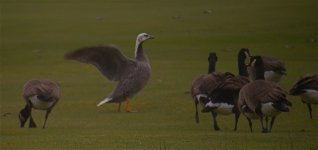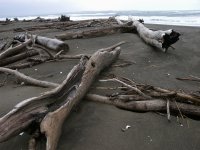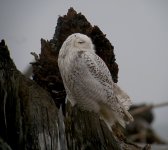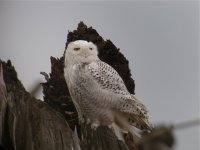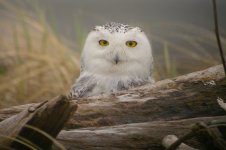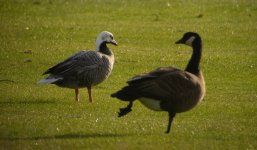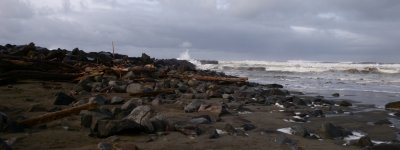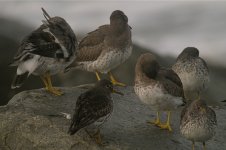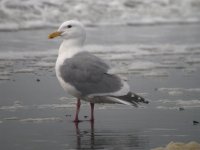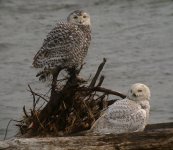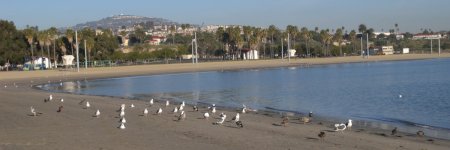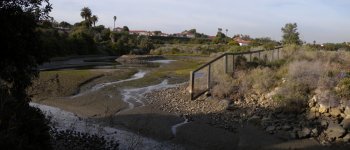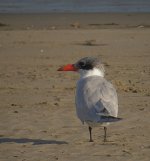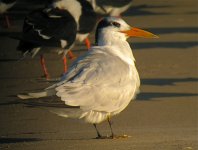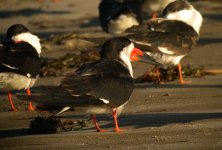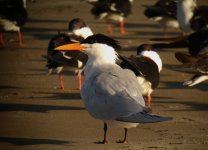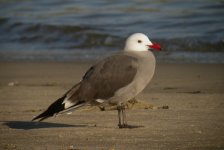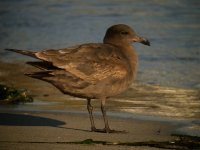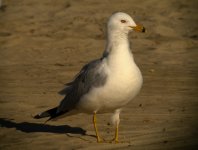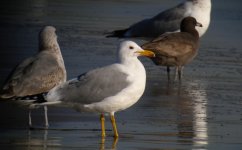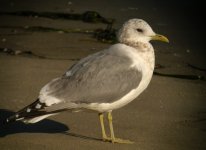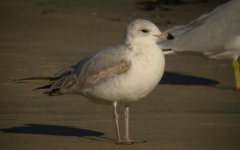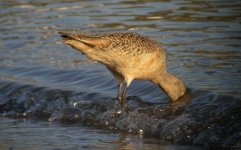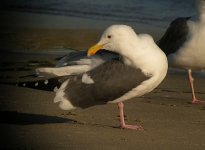MKinHK
Mike Kilburn

Introduction
All of the birding on this trip was built into a ten-day work trip to study ways to reduce emissions from ports and ships on the west coast of North America.
This provided my first ever opportunity to go after Snowy Owls, which have come far south in a terrific irruption year, and to extend my coverage of the West Coast (following a visit to northern California in April/May 2011) south to Los Angeles, where a conference held on the edge of San Pedro Bay provided a good opportunity for some early morning birding within waking distance of the hotel.
16-17 February
After a wasting midnight flight to LA followed by a 3:30 rise for a 6am dead-eye connection ("red-eye" just doesn’t do it credit!) to Seattle it was a miracle I saw any birds at all.
Nonetheless a splendid adult Glaucous-winged Gull with elegant grey wing-tips was guarding a streetlight right next to the “skywalk” from the terminal to the carpark at SeaTac airport. Birding from the light rail into Seattle delivered a nice bonus in the form a of three Mallards, a pair of Gadwall and a cracking male Bufflehead on three different flood relief ponds!
A drive out to Bellevue to see a vehicle emissions testing centre in action provided drive-by views of Bald Eagle hunched in a lakeside tree, and an American Robin sang in the gathering gloom at the bus-stop. Does anyone know if the crows in Seattle are all American, all Northwestern or a mix of both? They definitely looked small, but I’m used to Large-billed Crows in Hong Kong as my default, so my opinion is marginally less useful than a chocolate teapot.
A visit to the Port of Seattle the next morning produced a few good seabirds – my first Red-necked Grebes for probably 20 years, half-a-dozen breeding plumaged Pigeon Guillemots, a lone Rhinoceros Auklet, a couple of Western Grebes, a Mew Gull, ten Barrow’s Goldeneye and a similar-sized flock of female Surf Scoters.
This visit was followed by a long, wet, slippery 110 mile drive to Gray’s Harbour in search of some real quality.
Stay tuned for the next exciting episode!
All of the birding on this trip was built into a ten-day work trip to study ways to reduce emissions from ports and ships on the west coast of North America.
This provided my first ever opportunity to go after Snowy Owls, which have come far south in a terrific irruption year, and to extend my coverage of the West Coast (following a visit to northern California in April/May 2011) south to Los Angeles, where a conference held on the edge of San Pedro Bay provided a good opportunity for some early morning birding within waking distance of the hotel.
16-17 February
After a wasting midnight flight to LA followed by a 3:30 rise for a 6am dead-eye connection ("red-eye" just doesn’t do it credit!) to Seattle it was a miracle I saw any birds at all.
Nonetheless a splendid adult Glaucous-winged Gull with elegant grey wing-tips was guarding a streetlight right next to the “skywalk” from the terminal to the carpark at SeaTac airport. Birding from the light rail into Seattle delivered a nice bonus in the form a of three Mallards, a pair of Gadwall and a cracking male Bufflehead on three different flood relief ponds!
A drive out to Bellevue to see a vehicle emissions testing centre in action provided drive-by views of Bald Eagle hunched in a lakeside tree, and an American Robin sang in the gathering gloom at the bus-stop. Does anyone know if the crows in Seattle are all American, all Northwestern or a mix of both? They definitely looked small, but I’m used to Large-billed Crows in Hong Kong as my default, so my opinion is marginally less useful than a chocolate teapot.
A visit to the Port of Seattle the next morning produced a few good seabirds – my first Red-necked Grebes for probably 20 years, half-a-dozen breeding plumaged Pigeon Guillemots, a lone Rhinoceros Auklet, a couple of Western Grebes, a Mew Gull, ten Barrow’s Goldeneye and a similar-sized flock of female Surf Scoters.
This visit was followed by a long, wet, slippery 110 mile drive to Gray’s Harbour in search of some real quality.
Stay tuned for the next exciting episode!




